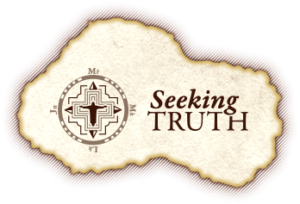Podcast: Play in new window | Download (Duration: 30:24 — 21.3MB) | Embed
Subscribe: Apple Podcasts | Spotify | Amazon Music | Android | Pandora | iHeartRadio | JioSaavn | Podchaser | Gaana | Podcast Index | Email | TuneIn | Deezer | Anghami | RSS | More
Episode 23 – The Gospel of Luke – Chapter 11 Part 1
Luke 11: “Lord Teach Us To Pray”
In this lecture on Luke 11, we focus especially on the Lord’s Prayer. Seeing Jesus praying in a certain place, his disciples asked, “Lord, teach us to pray.” They saw the Lord praying by himself, and they desired to have a similar union with the Father. As faithful Jews, the disciples knew how to pray, but they wanted to pray as Jesus prayed. From the Catechism of the Catholic Church, we learn that the first communities prayed the Lord’s Prayer three times a day, in place of the “Eighteen Benedictions” customary in Jewish piety (CCC 2767). The Eighteen Benedictions, also known as the Amidah, are the core of every Jewish worship service. Established by Ezra and recited while standing, the Amidah consists of prayers of praise, petitions and thanksgiving. The Amidah is accompanied by the Shema prayer which is said twice daily and comes from Deuteronomy 6: “Hear, O Israel: The Lord our God is one Lord; and you shall love the Lord your God with all your heart, and with all your soul, and with all your might.” To the Jews, God was “one” but they had no understanding of the Trinity who is one God in three Persons.
The Lord’s Prayer is the perfect prayer, spoken at Mass, the highest prayer, just after the Eucharistic prayer and just before reception of Holy Communion. The order of the Mass had its earliest beginnings just after the resurrection of Jesus when he appeared to the disciples at Emmaus: First he opened the Scriptures(Liturgy of the Word) and then, “When he was at table with them, he took the bread and blessed, and broke it, and gave it to them (Luke 24:30 Liturgy of the Eucharist)” The 40 days between the resurrection and the ascension was a time of prayer and learning for the disciples, as Jesus appeared to them. After the ascension, the disciples prayed for nine days, which can be seen as the first novena. Then, on the 10th day, the Holy Spirit was poured out at Pentecost, 50 days after the resurrection.
Catechism paragraph 1085 describes the glorious Paschal mystery. It is a beautiful reflection worth reading in its entirety:
“In the liturgy of the Church, it is principally his own Paschal mystery that Christ signifies and makes present. During his earthly life Jesus announced his Paschal mystery by his teaching and anticipated it by his actions. When his Hour comes, he lives out the unique event of history which does not pass away: Jesus dies, is buried, rises from the dead, and is seated at the right hand of the Father “once for all.” His Paschal mystery is a real event that occurred in our history, but it is unique: all other historical events happen once, and then they pass away, swallowed up in the past. The Paschal mystery of Christ, by contrast, cannot remain only in the past, because by his death he destroyed death, and all that Christ is – all that he did and suffered for all men – participates in the divine eternity, and so transcends all times while being made present in them all. The event of the Cross and Resurrection abides and draws everything toward life.”
The Lord’s Prayer has been described as the summary of the whole Gospel. As found in Luke 11 and Matthew 6, it is a series of seven petitions. Beginning with the words “Our Father,” the Lord’s Prayer immediately draws our hearts to the intimate relationship between a father and his children. This sense of God was new to the Jews, who experienced God as creator and ruler. We realize now that the first creation in Genesis makes sense in light of the new creation of Christ. On occasion, the Old Testament describes God as a father, both to the nation of Israel (see Hosea 11, Isaiah 64:8, Malachi 2:10 as examples) and to certain individuals such as King David (1 Chronicles 22:11). With Jesus, sonship takes on a whole new meaning. He is a “Son, whom he appointed the heir of all things, through whom also he created the world. He reflects the glory of God and bears the very stamp of his nature, upholding the universe by his word of power (Heb 1:2-3).” Even more, we learn that not only is God the father of Jesus, He is also our Father: “I am ascending to my Father and your Father, to my God and your God (John 20:17).”
The next petition in the Lord’s Prayer is “Hallowed be thy name.” It is a reminder that He is God and we are not. From the beginning with Adam and Eve until now, we are tempted to be our own God.
Next is “Thy kingdom come. Thy will be done.” We are reminded that we can only serve one king and we need to choose between the worldly kingdom of Satan, and the heavenly Kingdom of Jesus. Jesus established His kingdom when he walked the earth, and His kingdom continues forever both on earth and in heaven. He promised the gates of hell will not prevail against it. He appointed Peter and his successors as stewards of His kingdom, the Catholic Church (IS 22). At the center of the kingdom is the true presence of God in the Eucharist. In the Old Testament, the true presence of God was found in the Ark of the Covenant, but at the time of Jesus, the temple no longer held the Ark as it had been hidden
©2019 Seeking Truth Catholic Bible Study
Sharon Doran serves as the teaching director of “Seeking Truth.” An experienced Bible Study teacher, Sharon has a passion for scripture that will motivate and challenge you to immerse yourself in God’s Word and apply His message to your everyday life.
For more in this series, visit the Seeking Truth with Sharon Doran Discerning Hearts page.
 “Seeking Truth” is an in-depth Catholic Bible Study commissioned by the Archdiocese of Omaha in response to John Paul II’s call to the New Evangelization as well as Pope Benedict XVI’s exhortation for all Catholics to study scripture. To learn more, go to www.seekingtruth.net
“Seeking Truth” is an in-depth Catholic Bible Study commissioned by the Archdiocese of Omaha in response to John Paul II’s call to the New Evangelization as well as Pope Benedict XVI’s exhortation for all Catholics to study scripture. To learn more, go to www.seekingtruth.net

